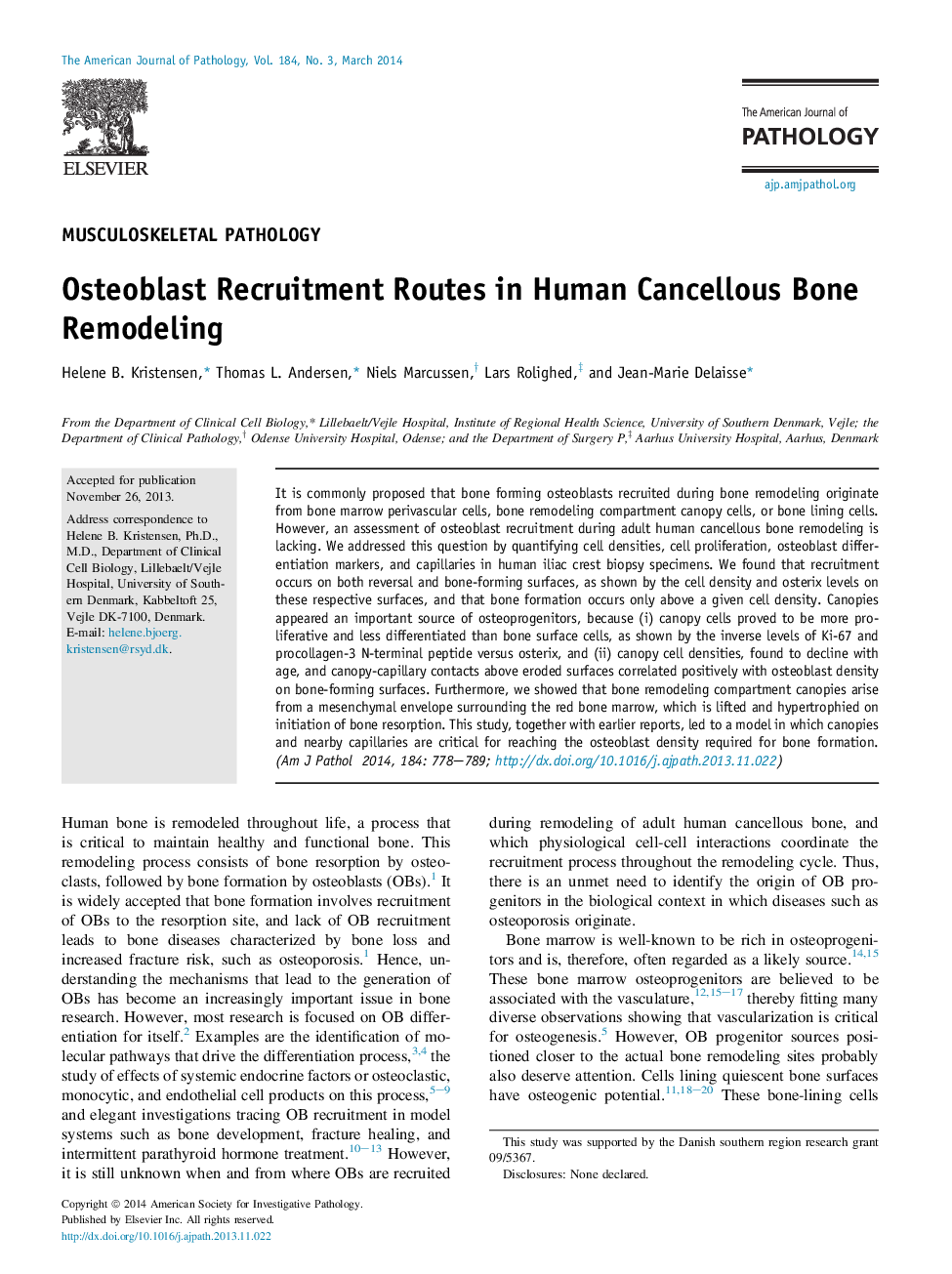| کد مقاله | کد نشریه | سال انتشار | مقاله انگلیسی | نسخه تمام متن |
|---|---|---|---|---|
| 5933116 | 1573395 | 2014 | 12 صفحه PDF | دانلود رایگان |
It is commonly proposed that bone forming osteoblasts recruited during bone remodeling originate from bone marrow perivascular cells, bone remodeling compartment canopy cells, or bone lining cells. However, an assessment of osteoblast recruitment during adult human cancellous bone remodeling is lacking. We addressed this question by quantifying cell densities, cell proliferation, osteoblast differentiation markers, and capillaries in human iliac crest biopsy specimens. We found that recruitment occurs on both reversal and bone-forming surfaces, as shown by the cell density and osterix levels on these respective surfaces, and that bone formation occurs only above a given cell density. Canopies appeared an important source of osteoprogenitors, because (i) canopy cells proved to be more proliferative and less differentiated than bone surface cells, as shown by the inverse levels of Ki-67 and procollagen-3 N-terminal peptide versus osterix, and (ii) canopy cell densities, found to decline with age, and canopy-capillary contacts above eroded surfaces correlated positively with osteoblast density on bone-forming surfaces. Furthermore, we showed that bone remodeling compartment canopies arise from a mesenchymal envelope surrounding the red bone marrow, which is lifted and hypertrophied on initiation of bone resorption. This study, together with earlier reports, led to a model in which canopies and nearby capillaries are critical for reaching the osteoblast density required for bone formation.
Journal: The American Journal of Pathology - Volume 184, Issue 3, March 2014, Pages 778-789
